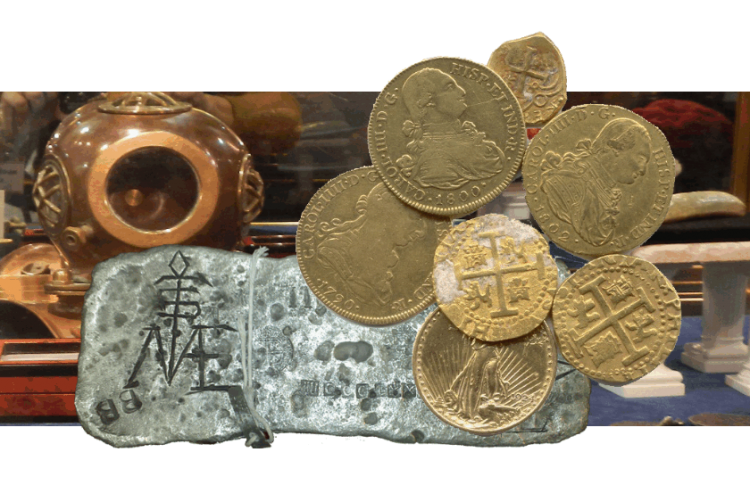Come See our Show
Our traveling exhibit and gift shop is on display at venues around the U.S. year-round.
Send us a quick Email, and we'll reply with all the details about when we're coming to your area and a coupon for a discount!
We have preserved beautiful artifacts like these as elegant wearable history with custom 18K, 14K and sterling settings. Which one speaks to you?
Contact us today and we'll find the perfect item for you.
Phone: 303.333.7759
Email: info@artifactexchange.com
Shipwreck of El Cazador 1784
El Cazador and the Louisiana Purchase
THE GOLDEN GLOVE - 1715 TREASURE FLEET SHIPWRECK GOLD
On the 300th anniversary of the shipwreck, a Diver brings up his glove full of 1715 treasure fleet gold doubloons and reveals them to-the crew on deck. See the incredible find, and watch the crew's fantastic reaction.
THE 1715 TREASURE FLEET SHIPWRECK 3 PART SERIES | MEL'S TREASURE TROVE
The 1715 treasure fleet shipwrecks left gold doubloons, pieces of eight, and other historical artifacts from 11 Spanish galleons off the East coast of Florida which are still being recovered by modern salvors like Big Blue Wreck Salvage.
Atocha 1622
- Read more about Atocha 1622
- Log in to post comments
La Capitana 1654
- Read more about La Capitana 1654
- Log in to post comments
La Consolación 1681
- Read more about La Consolación 1681
- Log in to post comments
The Maravillas 1656
- Read more about The Maravillas 1656
- Log in to post comments
Rooswijk 1739
- Read more about Rooswijk 1739
- Log in to post comments



